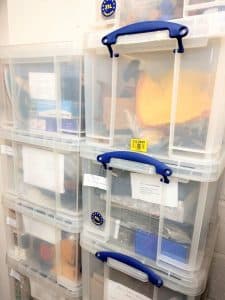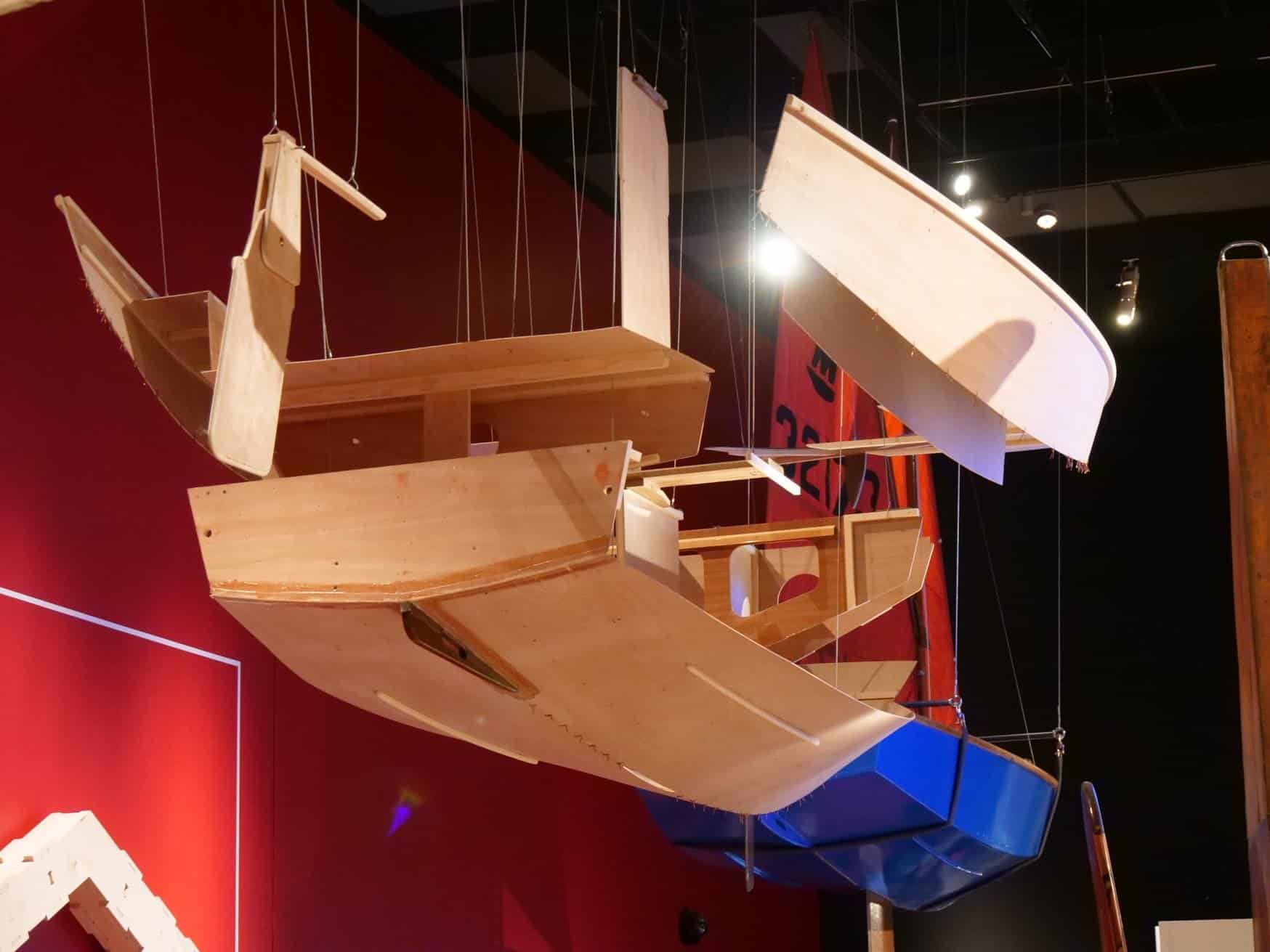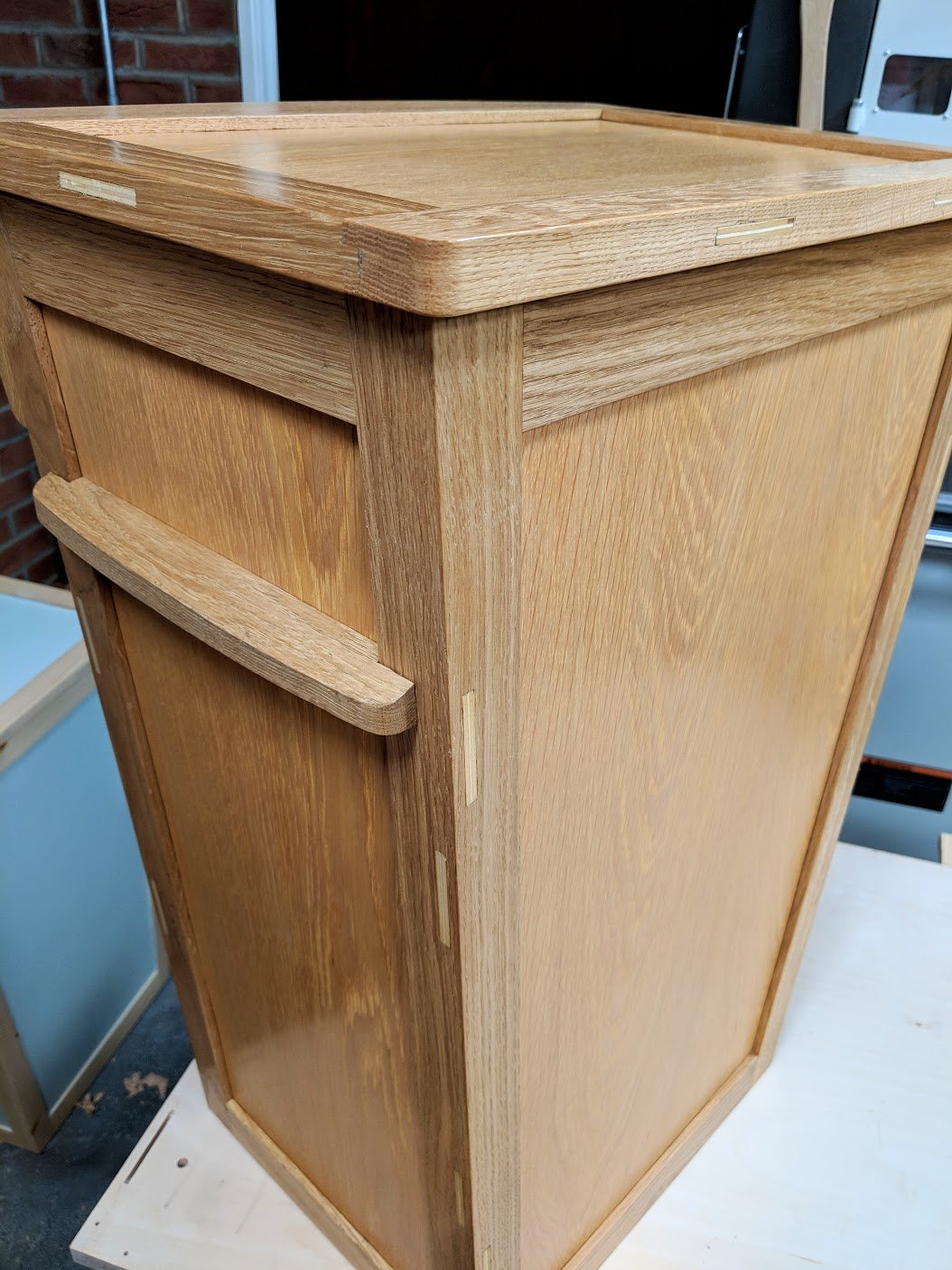Shedding the Past…
…or should it be shredding it?
Last year was quite a hard year. Moving house to start the year with, moving offices and business to our own new premises, building the garage workshop studio and keeping up with the videography the whole time to make things as disruptively seamless as possible. Perhaps I was wrong to want to protect others from the disruption we ourselves were going through but it was the fact that no one else could do anything to make the work any easier.
There are just some things you have to go through on your own and volunteers can take more work than the work itself in such situations. Who else could wrap my tools and know which ones were important to me, which ones I would want access to immediately and which ones I cared the most about? 1,000 hand tools yet only 50 actually needed. There were moments of self doubt when you question your decisions, your motivations, and then there’s that minute when you say to yourself and those supporting you, “Thank goodness! I am so glad that we did this!”. In times past, at least three times, I have uprooted my whole family to leave countries and continents behind in the quest to pursue new frontiers and working wood, teaching and training others has always been core to the endeavours. There were times when I moved to live in Texas when Texas seemed not to be a part of the US at all, mostly because of its long history striving for independence and then mostly because of its size and diversity.

I am still glad that I picked Texas over the other 49 US states, but I could not at first really say why. Now I see that 30 years ago when I arrived it really was the reason it had a Texas Embassy in London, England. Regardless, Texas was a really good choice for me. I liked the wilds and the wildnesses I encountered. I doubt now that I would leave the UK to live elsewhere but that is because of my work life, lifestyle demands. Were I 50 years younger I might rethink living in so small and isolated a country. It was the USA as a whole that opened up my life to new possibilities and opportunities. It was in the USA that I learned about shedding and sloughing. The US has been remarkable in many ways, both right and wrong.
My first find of a snake skin in Texas from a rattle snake was an old one. I later found another, but one still in pristine and new condition. My companion, a native Texas ‘old’ boy’ and a country boy at that, said to me, “Time to mount up. A skin as fresh as that one means the previous owner is still around here somewhere!” I turned around to grab my still throbbing chainsaw humming two yards from me and there was the rattler coiled up and warm as could be by the handle. A long stick tucked into the handle retrieved the chainsaw and we moved on.
Shedding in my sloughed-off skin encasement
It was remembering finding the parted off of the outer membrane of snake skin that I thought about our past, present and future. If you see a snake with its brand new skin it can be quite mesmerising as can the snakes themselves. I have never been frightened of snakes but I am aware that they draw you in to a point that you might forget inherent dangers surrounding them. I have always had a healthy regard for knowing when to run and have done so a time or two. Rattlesnakes and copperheads are killers, believe me, they make you move quickly. To use the term shedding is more a way of saying the old was very significant but the unfolding of the new is critically important. Sloughing off its old skin is a snakes way of ridding itself of a well worn or worn out skin. It is also the snakes way of ridding itself of parasites robbing nutrients that can gradually but progressively weaken its body. In this past week or so I left a bronchial problem behind me. I left the old behind and I am now looking forward to the future new. What intrigues me the most is the excitement I feel about changing things, changing lives using the work we do to teach and train but more even that that, to inspire and influence. I think people more and more are questioning the status quo in their lives. They are asking themselves why they do this or that and asking themselves if they feel the need to more engineer their futures rather than just allowing things to happen that then determine it by some sort of default positioning.
Transition is a place for thought, a place for planning and thinking through exactly what you want to achieve in the things important to you but not just to you, more importantly, to others too. I’ve recently spent a few weeks designing and making things new, things we are about to start sequentially filming. One of the designs is really very different to anything I have done so far and yet it is very much a design of mine that’s been well tested and well proven as a functional design too. Do you remember the plywood tenons in my eco waste bin a few months ago? It was really quite radical in some ways to integrate panels into rails and posts as a way of total integration rather than merely a floating rattly entity; my quest was to make the panel relate to the main framing components in a more integrated way. It worked. As far as I know no one’s done it before. I think the design resulted in integrity. But I didn’t do it just to be different or indeed unique. I wanted to do it to create alternative considerations.
So what was it that created my new thinking?
Well, quite simply, it was my trip with Hannah to the V&A plywood exhibit. I felt that plywood now had a well-proven efficacy. Its equally as solid in some ways as the solid wood it’s made from even though it is made up of striations of cross laid levels. The thing is this; plywood has led to ever greater levels of endless possibilities. You can do things with plywood that you cannot do with solid wood. Someone in times past decided to harness wood’s natural propensity to split, shrink and expand to make it even stronger and more resilient by creating cross plies of wood. They wanted to, well, make the wood give up or give out. The birth of plywood was a wonderful consideration and in my view it is one of the most economical uses of wood that there is.
Every week something is created from plywood that cannot be created using solid wood in its original grown and dried out condition. This alone should tell us to rethink our use of it. Plywood gave us the lightest aircraft and the strongest canoes and kayaks in their day of invention. Plywood gave is super-strength lightweight, stackable chairs. Plywood, especially the upper-end grades, gave us versatility, stability, expansive surfaces in consistent thicknesses and then too bent and bendable components. Plywood is amazing. Try wrapping your mind around it.
In my eco bin design the tenons I incorporated meant tenons could be made in the panel to face any and all directions in the framework. There are things to do with it that real wood might be defied by. I have many new plans for the coming year that include plywood. The first project will soon be revealed in the coming weeks, as we ourselves launch into the coming year. It’s time to start shedding my friends. I hope you will enjoy this next leg of the journey.








Don’t shedd all your friends. ?
Let’s eat, Grandma! Let’s eat Grandma!
Some friends belong in the shed.
Another one that makes me think, and a good time for that…….thanks Paul!
best
Martha
Did you know that plywood was first used by the Egyptians way back in the days of the Pharaohs.
Thanks Paul. I had heard that there is some woodworking/furniture that incorporated shark skin and turtle shells into it. I don’t know any more than that.
Did you ever incorporate those snake skins into your work?
While looking at plywood, you might want to also ponder laminated beams and posts, which apply the same principo to assemble thicker stock with plywood’s advantages. I’ve seen occasional articles discussing attempts to use these construction materials in the woodshop; the largest issue I’ve seen raised against them is that the adhesives make them very tough on tools (which is true of some natural woods too; ipe, for example). They’re also not as pretty as natural wood, but if you are going to paint or veneer, or if it’s a purely functional piece, that may be a trade-off you can live with.
I’ve always fancied having a go at making my own plywood, rarely am I happy with what’s available, it’s very expensive for the high grade stuff but it is amazing material.
I love plywood too. When I first discovered Pauls videos I abandoned plans for machinery in favour of hand tools. But because I’d learned to love plywood I did keep two things: a track saw and router table. Not essential by any means but I only use them for plywood and they do help. Fun it isn’t but it is effective. The joy is in the design and the finished article.
Either way I think the key to plywood is not to use it randomly as a solid wood substitute in otherwise conventional designs but to use it for things it well suits and in ways which allow you to embrace the stripy edges. My last ply project was wall brackets for a pair of 50lb speakers. Solid timber would’ve been too chunky but ply proved a streamlined and interesting substitute for welded steel.
If only good quality birch ply was cheaper I’d use it more often.
I have moved too many times to count at this point in my life. I’ve relocated at least three times from coast to coast in the United States. Each time it was do to another search for work. Each time I said goodbye to new friends and old relatives having to start completely over in a strange land. Trust me when I tell it’s like living on a different planet when you move from the Pacific Northwest to South Carolina. The U.S. is a big place!
Moving to New England on my last move I packed all my worldly possessions in my SmartCar then shipped it ahead of me to Massachusetts. I had to rebuild my woodworking tools completely from scratch as there was no room for hand tools or power tools in such a small car. I flew to my new home in 5 hours barely arriving behind my car. I feel your excitement and anxiety having to move lock, stock & barrel so many times.
Yep! Moved home 20 times to date, between two continents and four countries.
Plywood has advantages for making panels, it’s less wasteful and doesn’t move like solid wood seasonally. It can be bought with different hardwood vaneers also. It’s not good for shelving.
Rodney
Play can be used as shelving if you attach thicker edges to stiffen it — and/ or if you use it to skin a torsion box, which can be as stiff as solid wood at a fraction of the weight.
As with any material, there are a few tricks which make using it easier and more effective.
Thank you Paul for never being STATIC!! I love exploring new things and respect your opinions, lead on old friend we are so enjoying the Journey!
Michael J Price
Snakes do seek the warm, ie the open blocks of a carport in Alabama. We found the skin hanging from a nail. The snake was under a board with a new skin, but still in the same place.
Practice happens in places. Change the place, change the practice. Like jet lag it takes a while for your new skin to catch up.
The strength of plywood lies within its flexibility coupled with its multi-planar nature. Its weakness – the edges (much like that of the Universe). The piece that Hanna photographed has exposed edges, unprotected by other wood. The artist must have expended no small amount of time and skill in slicing those fibers, and the glue.
Hello and Happy Birthday, Paul!
This is probably the first message from a Japanese non-woodworker-woman.
I still remember my grandfather leaning against a little table-shaped brazier, NAGA-HIBACHI which warmed SAKE for him and gave some mouth-treats to us. This small wood furniture was the Sun of our living room.
Beautiful lights and shades brought by our traditional room screens SHOUJI… how can I describe those rooms filled with delicate gemlike happiness… All, almost all these kind of wood-based houses are gone from modern Japanese buildings. We are shamefully losing not only healthy comfortable life but more seriously losing our ancesters’ wisdom of craftsmanship tradition.
Every time I read the comments of you and your vlog community, that serene warmth in our old living room with NAGA-HIBACHI revives. Then I restart to prepare another story for the young people near me about my unforgettable wood-surrounded childhood days. My story telling is to express gratitude to our ancesters who taught us the right way of life.
Thank you very much indeed for your beautiful and inspirational messages for us. Paul, you’ve got one more admirer who shares camaraderie through wood life.
-Michiyo
P.S.1
Paul, please visit someday, TAKENAKA DAIKU DOUGUKAN in Kobe City. I’m a frequent visitor of this museum, it’s an homage to the true woodworkers. *https://www.dougukan.jp/exhibition?lang=en
P.S.2
In my parents’ old house there’s no rattle snake, but…I met a tiny cute baby snake there just a few months ago!
Thanks for this, Michiyo, and the kindness. I do enjoy thoughtful contributions from everyone. I have never worked out if its the wood that makes woodworkers kind or whether those that work wood were born kind. No matter, thank you for thinking of me.
Paul,
I do have a question about using my antique D8s for cutting plywood. Any thoughts about hand tools suited to plywood and such? I was thinking at least a hand saw with impulse hardened teeth and perhaps a plane iron ground just for plywood.
Personally I don’t have an issue cutting plywood with my handsaws but I can understand the more prissy side of owning fine tools where they must be protected from any and all possibility of scratches. I tend to use tools and do not want to spend my time being guarded. I also see nothing wrong with using hard point saws for some work. I keep two around just for that. I most likely would not take a £220 Lie Nielsen to lop of a fence post at ground level whereas I wouldn’t be too bothered with the Spear and Jacksons I recommend. What’s the difference. Mostly cost, then stiffness and then suitability. I know that the Spear and Jackson would not buckle or balk at the task because it was designed for a wide variety of work and not just benchwork and such like that.
Paul,
Thank you; there is a lot of wisdom in that answer. I look forward to learning about plywood and hand tools. As part of my own shedding, I’ll have to learn how to make better handles for new saws.
Paul,
Thanks for this blog post. I always enjoy hearing about your travels to the USA and back to England while bringing your woodworking with you. I find it fascinating that you are so adventurous.
–Jim